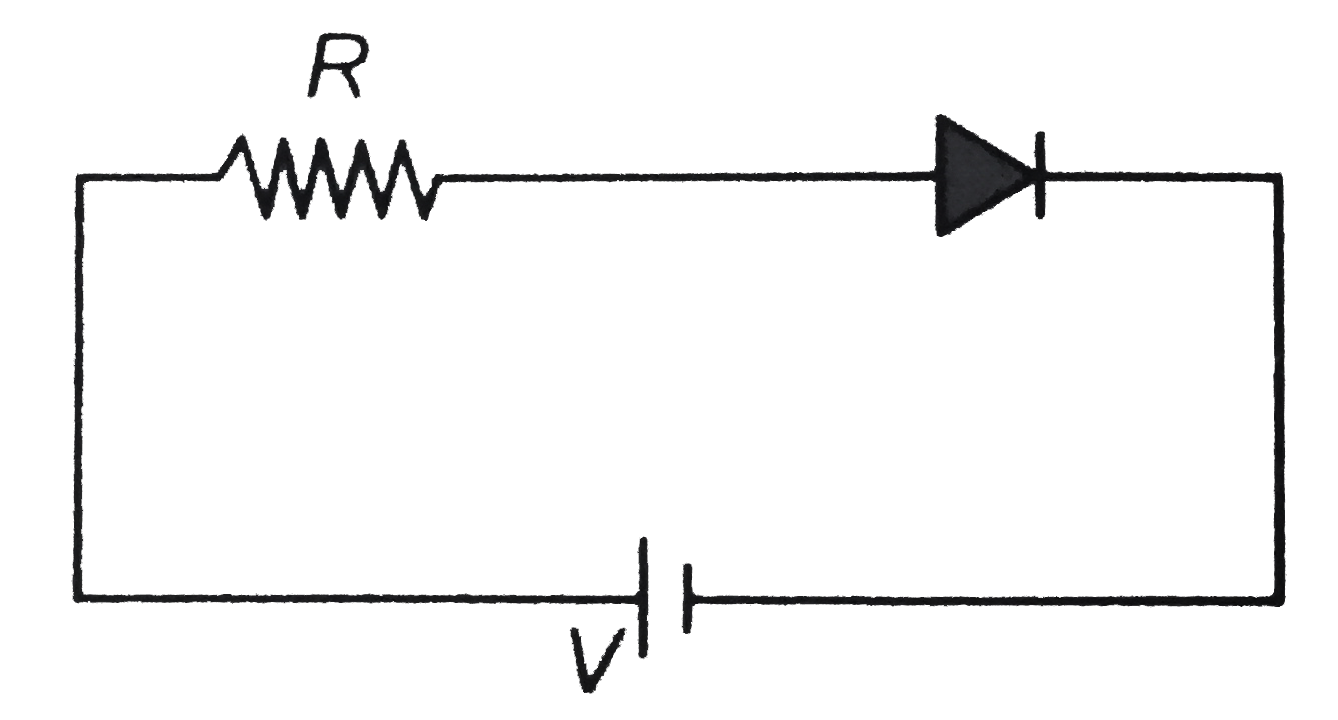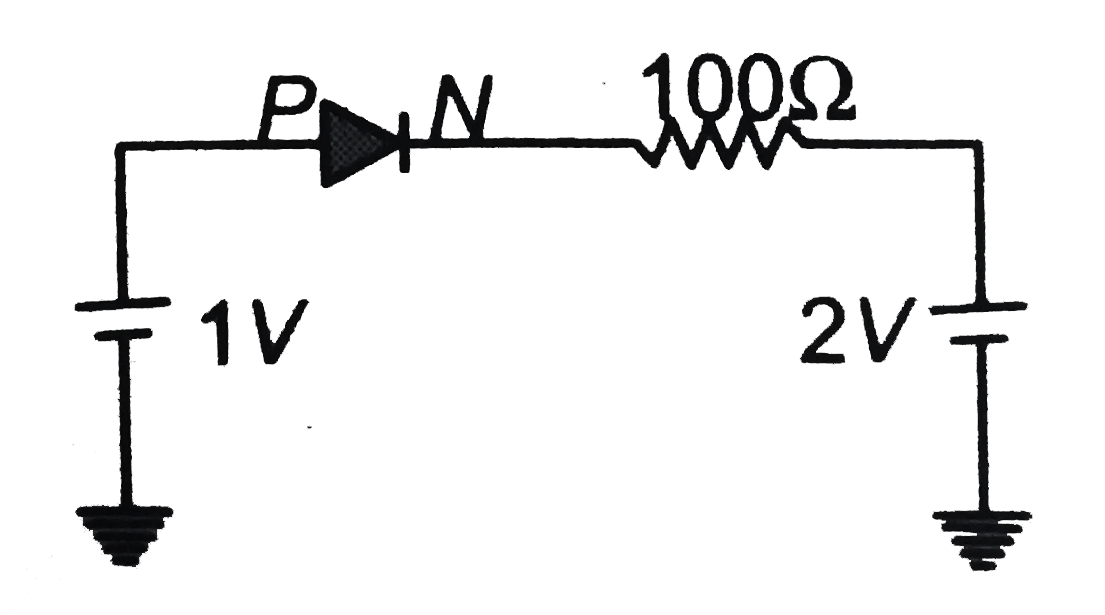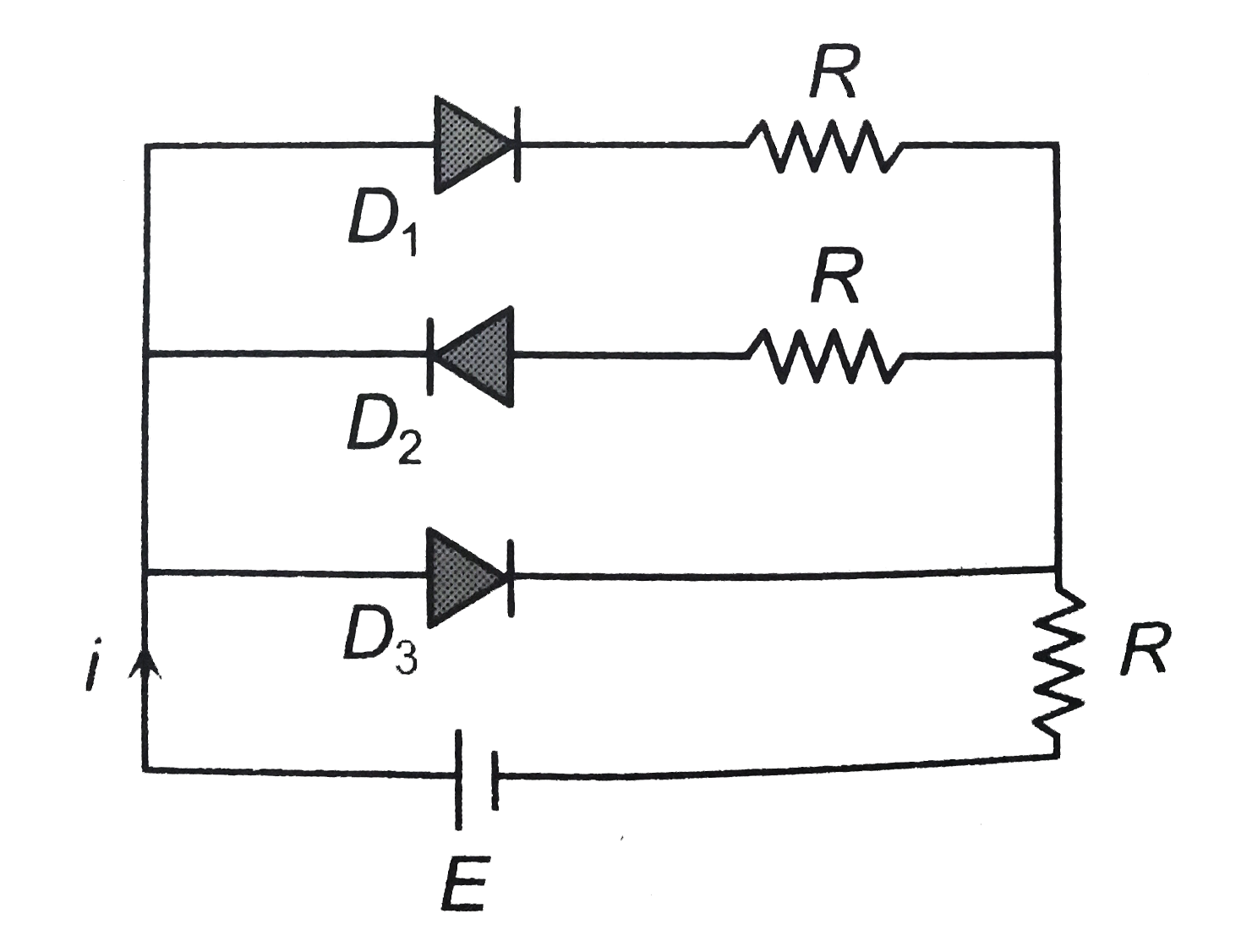In a PN junction
high potential at N side and low potential at P side
high potential at P side and low potential at N side
P and N both are at same potential
undetermined
The correct Answer is:A
To solve the question regarding the potential in a PN junction, we will analyze the characteristics of a PN junction diode step by step.
1. Understanding the PN Junction:
- A PN junction is formed when p-type and n-type semiconductors are joined together. The p-type semiconductor has an abundance of holes (positive charge carriers), while the n-type semiconductor has an abundance of electrons (negative charge carriers).
2. Formation of the Junction:
- When the p-type and n-type materials are brought into contact, electrons from the n-type region will diffuse into the p-type region where there are holes. This process leads to recombination, where electrons fill the holes, creating a depletion region at the junction.
3. Charge Carrier Movement:
- As electrons move from the n-side to the p-side, they leave behind positively charged ions in the n-region. Conversely, the p-side will have negatively charged ions due to the absence of holes. This creates an electric field across the junction.
4. Establishing Potential:
- The electric field generated by the ion charges creates a potential difference across the junction. The side with the positive ions (n-side) will have a higher potential, while the side with the negative ions (p-side) will have a lower potential.
5. Conclusion:
- Therefore, in a PN junction, the high potential is at the n-side and the low potential is at the p-side. This leads us to conclude that the correct answer to the question is:
- High potential is at the n-side and low potential is at the p-side.
Final Answer:
- The correct option is: High potential is at n side and low potential is at p side.
- A PN junction is formed when p-type and n-type semiconductors are joined together. The p-type semiconductor has an abundance of holes (positive charge carriers), while the n-type semiconductor has an abundance of electrons (negative charge carriers).
- When the p-type and n-type materials are brought into contact, electrons from the n-type region will diffuse into the p-type region where there are holes. This process leads to recombination, where electrons fill the holes, creating a depletion region at the junction.
- As electrons move from the n-side to the p-side, they leave behind positively charged ions in the n-region. Conversely, the p-side will have negatively charged ions due to the absence of holes. This creates an electric field across the junction.
- The electric field generated by the ion charges creates a potential difference across the junction. The side with the positive ions (n-side) will have a higher potential, while the side with the negative ions (p-side) will have a lower potential.
- Therefore, in a PN junction, the high potential is at the n-side and the low potential is at the p-side. This leads us to conclude that the correct answer to the question is:
- High potential is at the n-side and low potential is at the p-side.
- The correct option is: High potential is at n side and low potential is at p side.
Topper's Solved these Questions
- SEMICONDUCTOR DEVICESBOOK - AAKASH SERIESCHAPTER - SEMICONDUCTOR DEVICESEXERCISE - EXERCISE -I (TRANSISTORS)
22 Videos
- SEMICONDUCTOR DEVICESBOOK - AAKASH SERIESCHAPTER - SEMICONDUCTOR DEVICESEXERCISE - EXERCISE -I (LOGIC GATES)
17 Videos
- SEMICONDUCTOR DEVICESBOOK - AAKASH SERIESCHAPTER - SEMICONDUCTOR DEVICESEXERCISE - EXERCISE -I (ENERGY BANDS AND CLASSIFICATION OF SOLIDS )
41 Videos
- RAY OPTICSBOOK - AAKASH SERIESCHAPTER - RAY OPTICSEXERCISE - PROBLEMS ( LEVEL-II)
60 Videos
- UNITS AND MEASUREMENTBOOK - AAKASH SERIESCHAPTER - UNITS AND MEASUREMENTEXERCISE - PRACTICE EXERCISE
45 Videos
Similar Questions
The contact potential at the junction site in a P-N junction is-
View SolutionDepletion layer has (for an unbiased PN junction) -
View SolutionWhich of the following current must be zero in an unbiased PN junction diode ?
View SolutionFor the given circuit of PN-junction diode, which of the following statements is correct?

View SolutionThe current through an ideal PN-junction shown in the following circuit diagram will be

View SolutionIn the following circuit of PN junction diodes D1,D2 and D3 are ideal then i is

View SolutionIn the case of forward biasing of PN-junction, which one of the following figures correctly depicts the direction of flow of carriers?
View SolutionWhen a silicon PN junction is in forwards biased condition with series resistance, it has knee voltage of 0.6V. Current flow in it is 5mA, when PN junction is connected with 2.6V battery, the value of series resistance is
View SolutionIn a p-n junction,a potential barrier of 250 mev exsists across the junction.A hole with a kimetic energy of 300 meV approaches the junction. Find the kinetic energy of the hole when it crosses the junction if the hole approached the junction (a)from the p-side and (b)from the n-side.
View SolutionWhen a p-n junction diode is reverse biased the flow of current across the junction is mainly due to
View Solution
